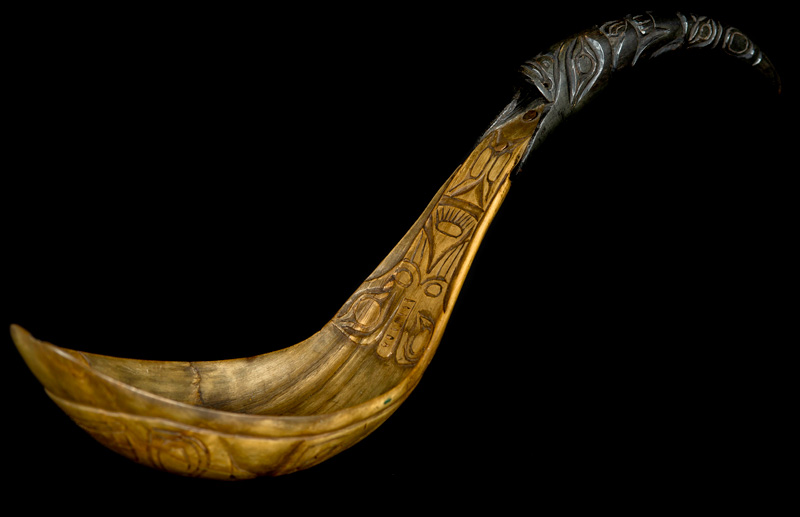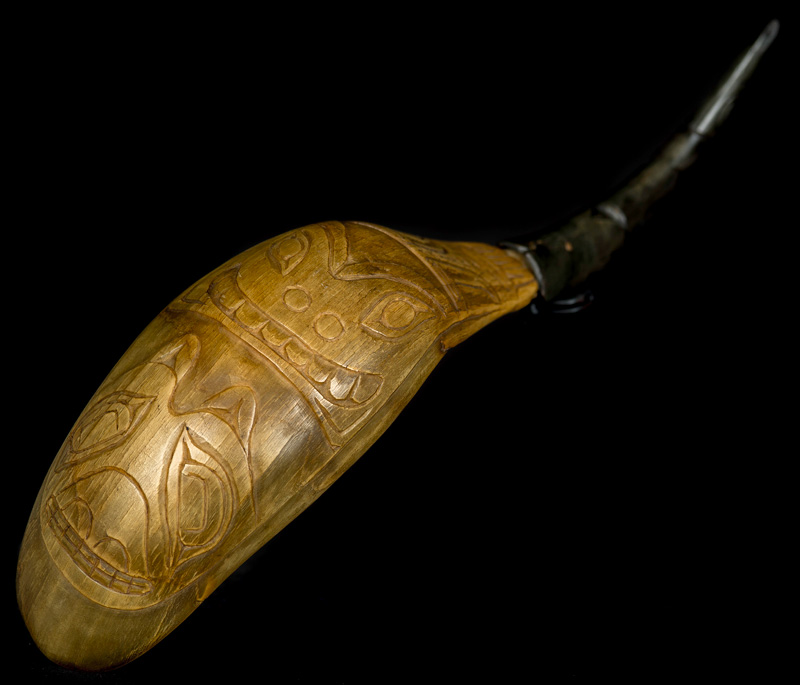A wonderful and large carved ladel from the First Nations people of the Northwest Coast. The totemic handle is carved out of mountain goat horn and fastened to the bowl which is carved out of big horn sheep horn and fastend together with copper rivets. A small museum inventory number 515 is inscribed on the right side near the handle.
Ladles and spoons were used to transfer food from serving containers to dishes and to eat with. Ladles were elegantly plain or might have handles embellished with an ancestral figure or a crest design. Antler spoons with crest figures on the handle from 3,000 years ago have appeared on the mainland at the Musqueam northeast site near the mouth of the Fraser River, and mountain goat horn cores for spoon handles from 4,000 years ago were found in the Prince Rupert middens. Unfortunately, there are no prehistoric examples of horn spoons from Haida sites, but it is likely that they acquired such spoons from mainland groups as part of the intertribal potlatch system. Individual horn spoons were the most elaborately decorated items at a feast. The bowl of the spoon was made from cream-coloured mountain sheep horn, steamed and bent in a mould. The curved handles were made from black mountain goat horn that provided a field for artistic display second only to that of totem poles. In fact, many spoon handles were faithful replicas of the poles in front of their owners' houses. Some of the most elaborate spoon handles have a dozen or more diminutive figures writhing around and seeming to devour each other on a handle that rarely exceeded 15 cm (6 inches) in length. Thousands of these exquisite works survive in museums. Some foods, like soapberries (or Indian ice cream), required special eating utensils. Spoons for eating whipped soapberries were shaped like miniature paddles, which people used to literally shovel the delicacy into their mouths. - Canadian Museum of Civilizations


